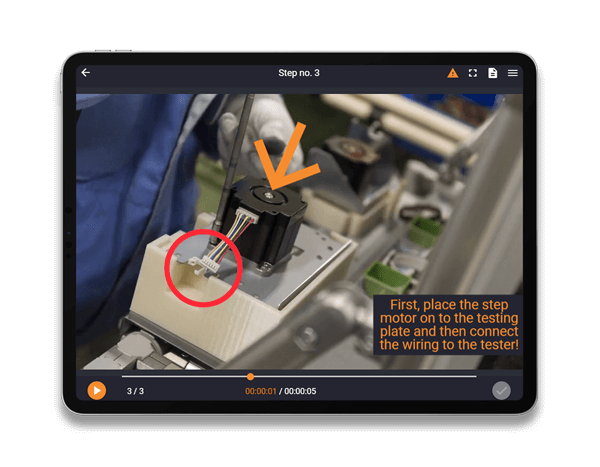Latest research shows that currently, unplanned downtime remains an unsolved conundrum, but it is certainly one worth solving. More than eight in ten organizations have been impacted by at least one unplanned outage involving their machinery/assets over past three years. On average, organizations have experienced two episodes during this period.
Downtime consultants say that almost every factory loses at least 5% of its productivity due to downtime, and many lose as much as 20%. That’s sobering enough in itself. But even worse, 80% of companies are unable to calculate their true downtime costs correctly. Some are underestimating them by as much as 300%! That translates to a lot of profit lost—without a proper sense of the seriousness of the problem, or even the ability to plan or account for it.
How much does downtime in manufacturing cost?
It would be wrong to only focus on the financial impacts of such episodes, but the figures are astounding, difficult to ignore and anything other than sustainable. According to latest research figures (February 2016), the average cost of unplanned downtime is $260,000, per hour. This number becomes even more eye-watering considering the length of time these outages last – on average, the episodes of unplanned downtime experienced by respondents’ organizations over the past three years lasted for four hours. This equates to $1,040,000 for one downtime outage, on average. But, it was not necessarily just one outage – two episodes have been experienced, on average, meaning this cost can be doubled to $2,080,000 over the past three years.
The automotive industry is a stellar example of the cost of downtime. In 2006, automotive manufacturing executives in the United States estimated production line downtime costs at about $22,000 per minute or $1.3 million per hour. Some estimates ran as high as $50,000 per minute.
Smaller manufacturers may not be losing those staggering sums, but they do face the same problem on a lesser scale. And it’s critical for them to know what they’re up against.
What are true downtime costs?
Downtime is simply a period during which machinery or equipment is not working and production is stopped. It could be due to a power outage, or a piece of machinery that breaks down, an accident on the line, and so forth. A company’s “true downtime costs,” or TDC, are the total wasted business support costs and lost business opportunities sustained while production is on hold, as well as the resources needed to fix the cause of the downtime incident. Generally, downtime is divided into two categories: tangible and intangible.
Tangible downtime costs
Tangible downtime costs are relatively easy to quantify. For starters, there is the most obvious one: lost production. Every minute of downtime is a minute when the company is not creating a product that contributes to profit.
A related tangible cost is lost capacity. When a plant is running at capacity, the business may need to expand—to hire more people, buy more machinery, etc., all which costs money. Reducing downtime creates extra revenue that can be used to build additional capacity; experiencing downtime takes away from that ability to expand capacity.
Tangible downtime costs also include direct labor. During downtime, the staff is still on the clock, so the company produces less using the same amount of labor at the same cost. Downtime also sucks up the time of mechanics and technicians forced to put out (figurative) fires instead of using their time to make permanent repairs and improvements to the equipment.
Intangible downtime costs
The more elusive aspect of true downtime costs is intangible costs. Intangible costs are harder to quantify, but may often be costlier to the company overall.
Here’s an example. Downtime affects responsiveness; less downtime allows a company to be more responsive, enabling it to satisfy its customers more efficiently.
And then there’s stress. Increased downtime causes stress for both machines and employees. Everyone performs best in a stress-free environment—the stress downtime causes prevent company’s employees from functioning as efficiently as possible.
Downtime can also dampen innovation. When everyone is stressed out and playing catch-up, they don’t come up with great innovative ideas that could bring down costs or increase staff productivity. These intangible costs, although much harder to quantify than the tangibles, affect a company’s performance just as negatively.
Root causes of downtime
It is fair to say that there are plenty of potential causes of unplanned downtime. For respondents according to a new Vanson Bourne global study whose organization has experienced an outage in last three years, 46% report that a hardware failure or malfunction played a role in this, while 40% cite a software failure or malfunction. These are not the only concerns though – overload (29%), user error (17%), a security breach (14%), and humidity (11%) have all played their part at some point showing that there are many bases to be covered. Fortunately, in most cases, the use of the appropriate tools makes these avoidable.
Downtime is not an option in Industry 4.0
Industry 4.0 (as in the fourth modern Industrial Revolution) is what some are calling the current wave of “digital connectivity of customer product, process, and factory through the use of emerging technologies.” (In case you’re wondering, the first was the “lean revolution” in the 1970s, the second was the outsourcing phenomenon of the 1990s, and the third was the rise of automation in the 2000s). The automotive and banking industries, to name but two, have embraced the change.
A critical part of Industry 4.0 will be maintaining the complex interconnected links in the chain. When one link goes, the whole chain is broken. We’ve discussed the astronomical costs of downtime before. Depending on the industry, it can cost a company as much as $200,000 per hour when production is down.
But that’s nothing compared to what it’s going to be in the not-so-distant future. Industry 4.0 will speed up manufacturing exponentially. That means it’s going to be exponentially more expensive when it all grinds to a halt because of electrical faults in one machine.
So, it’s going to be imperative to have staff on hand who can instantly troubleshoot faults and get machinery back up and be running quickly.
Brain drain
Reducing downtime is obviously key to a healthy bottom line. To avoid soaring total downtime costs (TDC), it’s imperative that those responsible for maintenance keep the facilities up and running smoothly. If downtime occurs (which it inevitably does), employees should be able to repair machines quickly and safely, lowering the entire TDC. The less downtime a company has, the more efficient its production. Having staff who are trained to assess and troubleshoot issues is a critical aspect of reducing downtime.

Aging skilled trade workers
But manufacturers are about to run into a big problem: the loss of skilled labor. For the last three years, the demand for skilled trade workers has sky-rocketed. As time goes on, the demand for welders, electricians, machinists—you name it—will only increase.
Right now, in the US, 53% of skilled trade workers are 45 years and older and 18.6% of are between 55 and 64 years of age, i.e., quickly approaching retiring age! Contrast that with the general labor force, where only 44% are over 45, and 15.5% are 55−64.
As the numbers go down, the demand goes up, and it’s a simple economic fact of life that it’s going to be a lot more expensive to hire, and more difficult to retain, the skilled labor manufacturers need.
The problem for the manufacturing industry, in general, is the lack of trained skilled trade workers on staff to handle problems as quickly as they arise. One way around this shortage is to give general maintenance staff the skills to do the repairs themselves. It’s a fact of life post-Industry 4.0 that manufacturers that want to survive in this new digitized environment will have to recruit, upskill, and retain staff capable of maintaining their business operations.
Knowledge transfer, visual instructions, and help when it’s needed
One of the main reasons why downtime is accumulated is because often the solution to a problem is buried in written documents and instructions that are hard to understand. There’s no effortless way for the maintenance engineer or the machine operator to determent the steps required to fix the problem. Often, people do things based on their assumptions instead of reading instructions, as instructions are too hard to understand, or it takes too much time to consider reading them. And that’s alright if this is a person with +30 years of experience, but not if it’s somebody who’s at the beginning of their career.
Besides misunderstood instructions, there’s also a lack of proper training material. New unskilled workers usually must shadow around more experienced people or deal with written scripts of what to do in certain situations. Scripts – and written material in general – are hard to keep up to date and shadowing is not productive.
Some errors in maintenance only happen a couple times per year. Maintenance would need to tackle unscheduled downtime as quick as possible, but more often than not, time is wasted troubleshooting when a solution has already been discovered in the past. It’s also almost impossible to provide remote assistance to help solve problems faster.
We improve communication with visualization
With the skilled labor force retiring in the next couple of years, something must be done in this area. The current system is broken as it’s not tailored to the needs of younger groups of laborers that are entering the market today. The current way of life is forcing us all to be more visual in our communication. YouTube, Facebook, and Snapchat all thought us to communicate with videos and images. If manufacturing companies are going to survive they need to find a way how to record and communicate knowledge from more experienced generations to the unskilled labor force that’s taking their place. Manufacturing companies need to find a new way to pass instructions, so workers can do more while reducing their possibility to make mistakes.
REWO was designed for this. It lets you capture knowledge of your skilled labor force in digital format and at the same time reduces the time you need to turn that knowledge into visual guides for your workforce. REWO helps you find the right solutions faster, guides you on what you need to do, and connects you with experts when you need them the most. Leave your email on the home page to talk to us.


Conclusion
Unplanned downtime, asset performance management, and loss of skilled labor (and their knowledge) are problems that have caused a great deal of operational and financial pain to organizations for many years. Organizations have begun to understand that investment is going to be necessary with many planning to invest over the next three years. There is clearly light at the end of the tunnel, and it is getting brighter. Our team at REWO is here to help you get there faster.
SOURCES:
- Dave Crumrine and Doug Post. “When True Cost of Downtime Is Unknown, Bad Decisions Ensue.”
- Advanced Technology Services. “Downtime Costs Auto Industry 22K/minute: Survey.”
- John Henry/Frain Industries. “Calculating Downtime’s Costs.”
- Don Fitchett/Business Industrial Network. “What is the True Downtime Cost (TDC)?”
- Manpower Group. (2015). Talent Shortage Survey.
- Joshua Wright. (March 7, 2013). “America’s Skilled Trades Dilemma: Shortages Loom As Most-In-Demand Group Of Workers Ages.” Forbes.
- Jim Raposa. (February 2016). “Maintaining Virtual System Uptime in Today’s Transforming IT Infrastructure.” Aberdeen Group.
- Vanson Bourne global study of Unplanned Downtime. (October 2017). “Human Error – A Common Reason For Unplanned Downtime Manufacturing Sector”
